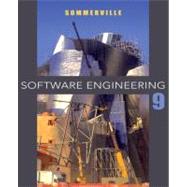Intended for a sophomore/junior level course in software engineering.
The ninth edition of Software Engineering presents a broad perspective of software engineering, focusing on the processes and techniques fundamental to the creation of reliable, software systems. Increased coverage of agile methods and software reuse, along with coverage of 'traditional' plan-driven software engineering, gives readers the most up-to-date view of the field currently available. Practical case studies, a full set of easy-to-access supplements, and extensive web resources make teaching the course easier than ever.
The book is now structured into four parts:
1: Introduction to Software Engineering
2: Dependability and Security
3: Advanced Software Engineering
4: Software Engineering Management








